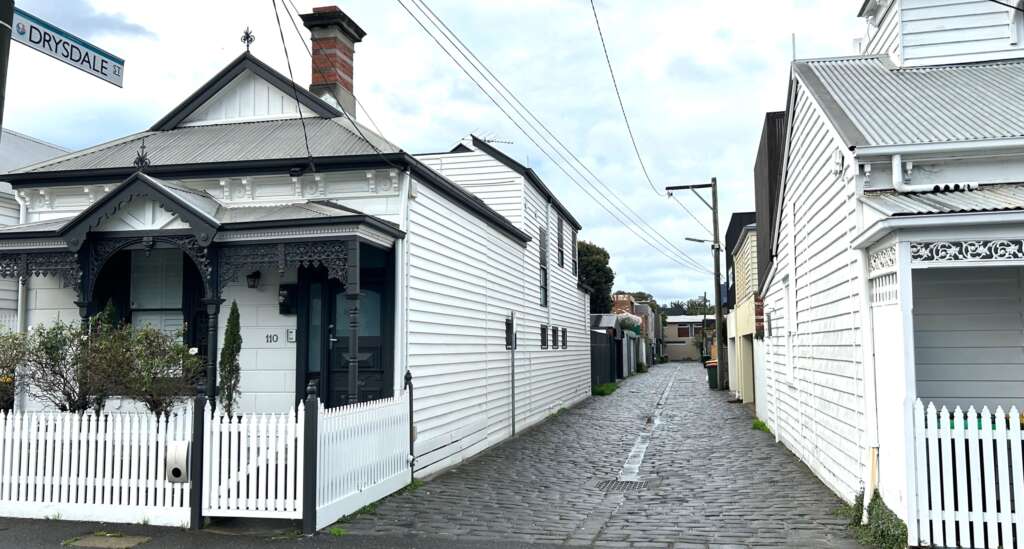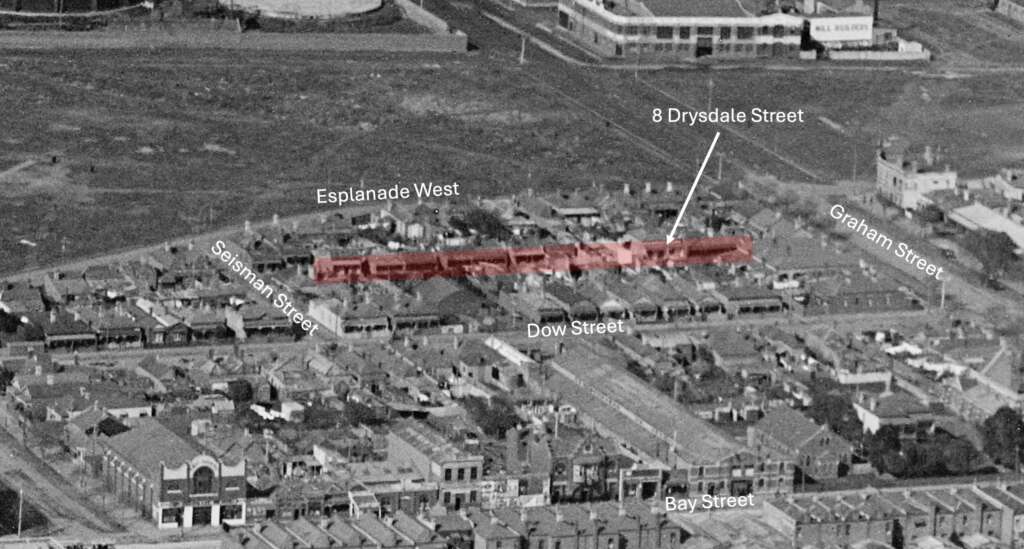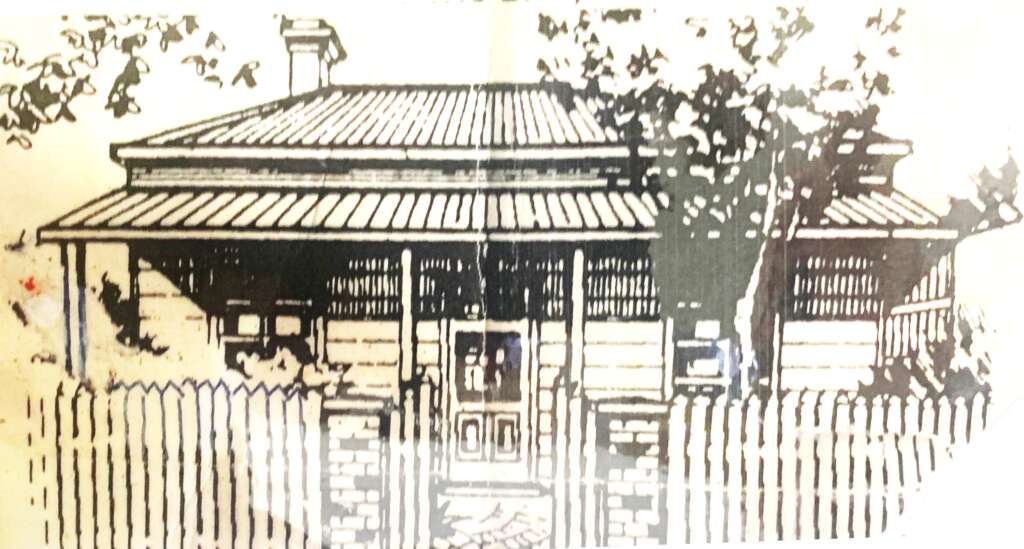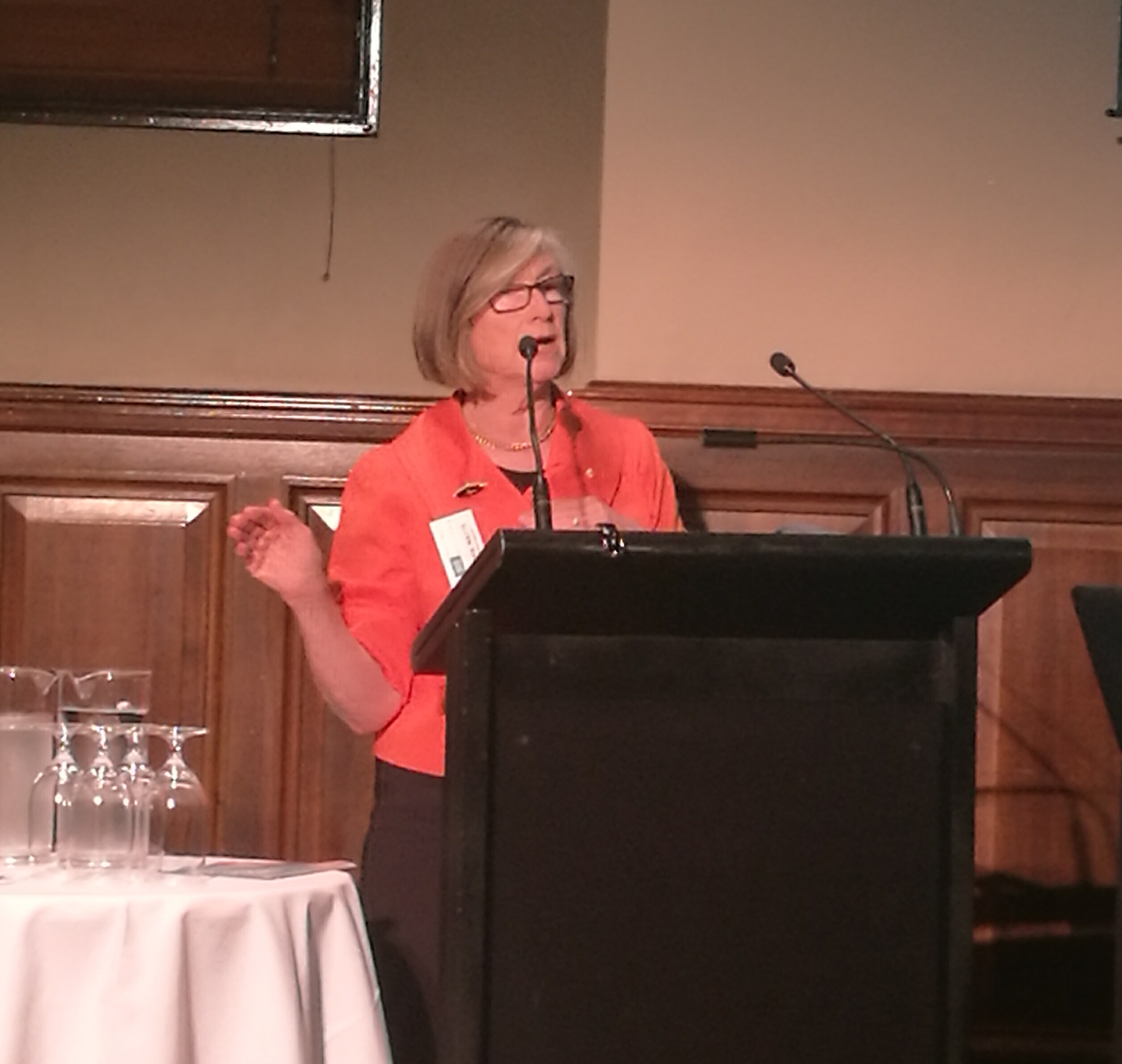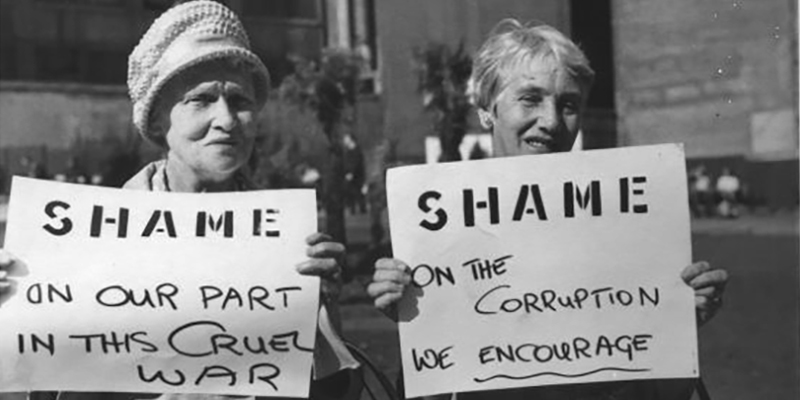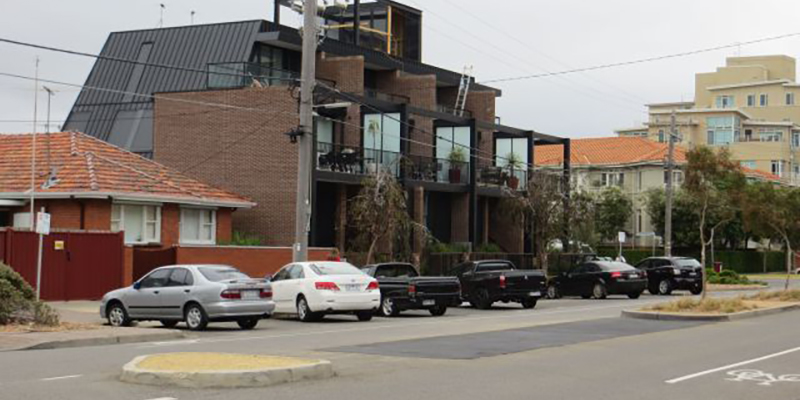Drysdale Street
by David F Radcliffe
Drysdale Street runs between Graham and Seisman Streets near Lagoon Reserve. It is named for the Drysdale family who resided in this narrow right-of-way from the 1860s to the 1930s. The name came into common usage in the late 1880s.[1]
There are many parallels between Drysdale Street and Brewster’s Lane. Both were created to provide access to the rear of building allotments in Sections 13 and 15 respectively of the Crown land subdivided and auctioned off in the 1850s as Sandridge expanded rapidly during the gold rush influx. Although not intended for this purpose, both ended up having houses fronting the laneway. Both run off Graham but at opposite ends of the street as it was in the 1850s.
A major difference between the two is that while Brewster’s Lane recalls one of the original landowners, Drysdale Street commemorates a struggling family who started out as tenants. Three generations of the Drysdale family lived at no. 8. Their cottage, which still stands today, was built on allotment ‘L’ of Section 13, a 27 perch block purchased by Ellen Pavely in March 1857. Later that year she married William Gibbett whose name appears as the landlord of the properties subsequently erected there including the one rented by the Drysdale family.
John Drysdale (19) married Jean Willis (24) in Glasgow in November 1846. He worked as a porter for a carrying company and they began to raise their family in Cumberland Lane in the Gorbals. John sailed to Melbourne in 1853, and Jean followed with their four children, James (9), John (6), William (4) and Jane (9 months), arriving here in September 1854. They settled in Sandridge where John found work as a drayman (carrier). However, their dreams of a new life in a far-off land were shattered when John developed phthisis (pulmonary tuberculosis) and died of pneumonia in June 1857.
Left to raise their four children, Jean found work as a laundress. In 1863, she rented the three-room wooden house in the yet unnamed laneway off Graham Street. By now her three sons were of working age and could contribute to the family income. Around 1870, Jean purchased this house plus another on the same plot of land (allotment ‘L’) facing Esplanade West. Subsequently, these properties, what became 8 Drysdale Street, plus 139 and 143 Esplanade West were owned by her 24-year-old son John, who was working as a lumper. At some point stables were erected next to 8 Drysdale Street.
By the late 1870s, there were eleven cottages on Drysdale Street. Ten of these were occupied up until the Second World War. Post-war, no. 8 was one of only two cottages that remained.
The family matriarch, Jean Drysdale, passed away in September 1903, aged 84. Now in his mid-fifties, and still single, her son John lived at no. 8 with his mother until her death. Subsequently, John moved to North Melbourne and married. His brother William, wife Ann and their seven children set up home in no. 8. Three of their daughters, Jean, Maud and Irene left the house for the church on their wedding day. There was disbelief and deep sorrow there when their eldest son, William Willis Drysdale died of wounds sustained at Gallipoli. He was the first of many from Port Melbourne to be killed in the Great War.[2]
When William passed away in 1934, flags were flown at half-mast at Swallow & Ariell, where he had worked, and at the Port Melbourne Bowling Club. At the time, he was the oldest continuously living resident of Port Melbourne.[3] William’s sister and her husband, Jane and George Walther who resided in Ross Street for nearly 60 years died the previous year. The other children of John and Jean Drysdale, James and John had already passed away.
When Port Melbourne celebrated its centenary in 1939, many descendants of John and Jean Drysdale attended. Their family name was mentioned in the same breath as that of the Liardets.[4] Yet, like the family after which it is named, Drysdale Street is unpretentious – a hardworking bluestone laneway that quietly contributes to the fabric of Port. It is a reminder of the many working families who made a life here against the odds.
The Port Melbourne Historical and Preservation Society would be delighted to hear from descendants of the Drysdale and Walther families of Port Melbourne to assist in a more complete telling of the story of John and Jean Drysdale and their family.
[1] Drysdale Street first appears in Sands & McDougall in 1887.
[2] “THE TOLL OF WAR.” Port Melbourne Standard (Vic. : 1914 – 1920) 19 June 1915: 1. Web. 24 Jul 2024 <http://nla.gov.au/nla.news-article91164857>.
[3] “OCTOGENARIAN PASSES” Record (Emerald Hill, Vic. : 1881 – 1954) 17 March 1934: 7. Web. 25 Jul 2024 <http://nla.gov.au/nla.news-article164463463>.
[4] “PORT MELBOURNE CENTENARY” The Age (Melbourne, Vic. : 1854 – 1954) 13 November 1939: 10. Web. 25 Jul 2024 <http://nla.gov.au/nla.news-article205590486>.

